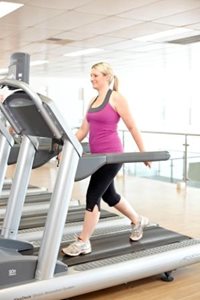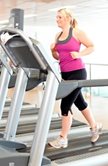Walk before you run

In the first few months after having a baby, it is important to give your body time to adjust and recover from pregnancy. The changes that your body undergoes are enormous, in order to ‘grow’ your baby or babies inside. Stretching occurs of both your uterus (womb) and your abdominal wall (the abdominal muscles and fibrous band called the linea alba) between them.
It takes approximately six weeks for your uterus to return back to being close to its ‘pre pregnant state’, although it’s size remains slightly larger than before you were pregnant. Most of the shrinking down being in the first two weeks, so that your uterus is sitting back in the pelvis
Reference for more information - http://emedicine.medscape.com/article/260187-overview
/Bridge-2013.jpg.aspx) Read more on pelvic floor in the 2013 Autumn Bridge magazine from the Continence Foundation of Australia.
Read more on pelvic floor in the 2013 Autumn Bridge magazine from the Continence Foundation of Australia.
Your abdominal muscles have lengthened, and as they assist in providing control and support to the trunk (your mid section), also called your ‘core area’, along with supporting the organs inside your abdomen. When the abdominal muscles are returning from being stretched (your uterus has increased up to 150 times it’s normal size during pregnancy), they are unable to provide good support to the spine while you are moving. The movement of the pelvis is also affected, which means that it will be likely to move more, when the abdominal muscles are not toned and back to their original length. Hip and pelvic muscles which have also been under load during pregnancy, may also need to readjust to the changes of no longer carrying the baby or babies inside.
With this, when you walk, feel the amount of movement of your hips and pelvis. If you took a ruler and placed it on the top of your pelvic bones, across the front, just above those two bony points that you can feel, how much movement is there? Notice the difference when you walk tall and when you slouch a little in your waist area. Is there a difference when you take bigger steps, or walk faster? What is happening to your back when you walk? This means, is there much movement from side to side in your lower back, or do you feel that your spine is quite stable. Walking upright with a pram will assist to provide you with some support, while you are strengthening up. Walking with support briefs can help to improve your posture and support your back while still being able to exercise, while your muscles and body are readjusting.
If there is a lot of movement in your back and pelvis while you are walking, then it is likely that when you jog or run, that there will be extra movement in your back. Over time, with the additional demands of motherhood, the extra movement of the joints in the back and /or pelvis while exercising can cause aches, pains or even strains of the back muscles as they work to protect the spine under load. Sometimes back tightness can be because the muscles and joints haven’t had the strength and support needed from the abdominal, hip and pelvic joints working well, being balanced and being in the right position.
So tips to consider to help you walk before you run. Walk first, start slowly and don’t ignore any small warning signs of back or pelvic ache or pain. Consider your pelvic floor first also and protect your pelvic floor by starting to walk first. Start then to either increase the speed or to increase the intensity by walking on an incline or up a hill to challenge your body while still protecting your back, pelvic joints and pelvic floor.

When you feel you would like to start running, consider checking your pelvic control, your abdominal muscle control and your pelvic floor first. Allow time for the softening hormones of pregnancy to leave your body and for your supporting ligaments to become firm and strengthen as they leave.
Start with a walk jog first, and test out your body. Any feeling of weakness, extra pelvic or back movement or discomfort should not be ignored, as with increasing intensity and the time that you exercise, they may become more apparent, unless you are working specifically to strengthen your weak areas at the same time. Usually, while you are early postnatal is the best time to work on your the key areas changed by pregnancy, which is why our postnatal exercise programs are designed specifically to build up the areas that need the most attention.
Proudly supporting

Click here to see our free postnatal exercise handout series.
.jpg.aspx)
Copyright 2011-2020. Demac Resources Pty Ltd. www.thepregnancycentre.com.au
Photos Copyright 2011-2020. Continence Foundation of Australia, used with permission.